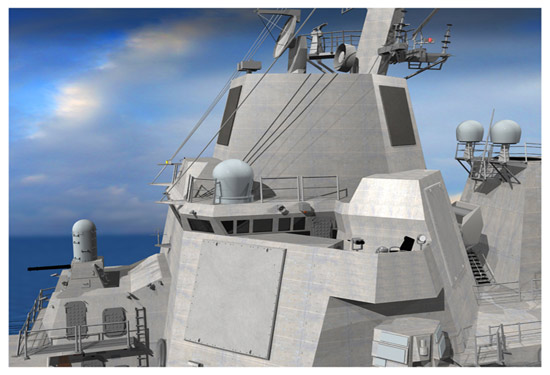
Lockheed — builders of the Navy’s long serving SPY-1 radar as part of the Aegis combat system — protested the Oct. 10 $386 million award to Raytheon for the $386 million award to Raytheon for an S-band AMDR and radar suite controller (RSC) planned for the Navy’s Flight III Arleigh Burke guided missile destroyers (DDG-51). Options in the contract could increase the award to Raytheon to $1.6 billion.
The Navy’s office has now rescinded an October stop-work order that prevented work on the AMDR pending a decision by the Government Accountability Office on the merits of Lockheed’s claim.
“Lockheed Martin protested the Navy’s award of the Air and Missile Defense Radar (AMDR) contract because we believed the merits of our offering were not properly considered during the evaluation process,” according to a statement by the company provided to USNI News.
“While we believe that we put forward an industry-leading solution, after receiving additional information we have determined it’s in the best interest of the Navy and Lockheed Martin to withdraw our protest.”
Given Lockheed’s decades long relationship with the Aegis system, the protest of the Raytheon award did not come as a surprise.
The AMDR will replace the current Lockheed SPY-1D radars with a 14-ft. aperture S-band radar (ballistic missile defense and air defense), X-band radar (horizon search) and radar suite controller (RCS).
Raytheon will now work to create the S-band and RSC for AMDR and the first Flight III destroyers will utilize the AN/SPQ-9B as the X-band radar.
“It is definitely one of the key enabling technologies,” said Captain Douglas Small, Naval Sea Systems Command’s AMDR program manager, during an interview with USNI News in July. “We’re basically in the Flight III going to deliver over 30 times the radar capability for about twice the input power.”
The first Flight III Arleigh Burkes will begin procurement in 2016 as part of a nine ship $6.1 billion multi-year deal the service inked in June.
The focus of the new ships paired with the AMDR will be on ballistic missile defense (BMD).





